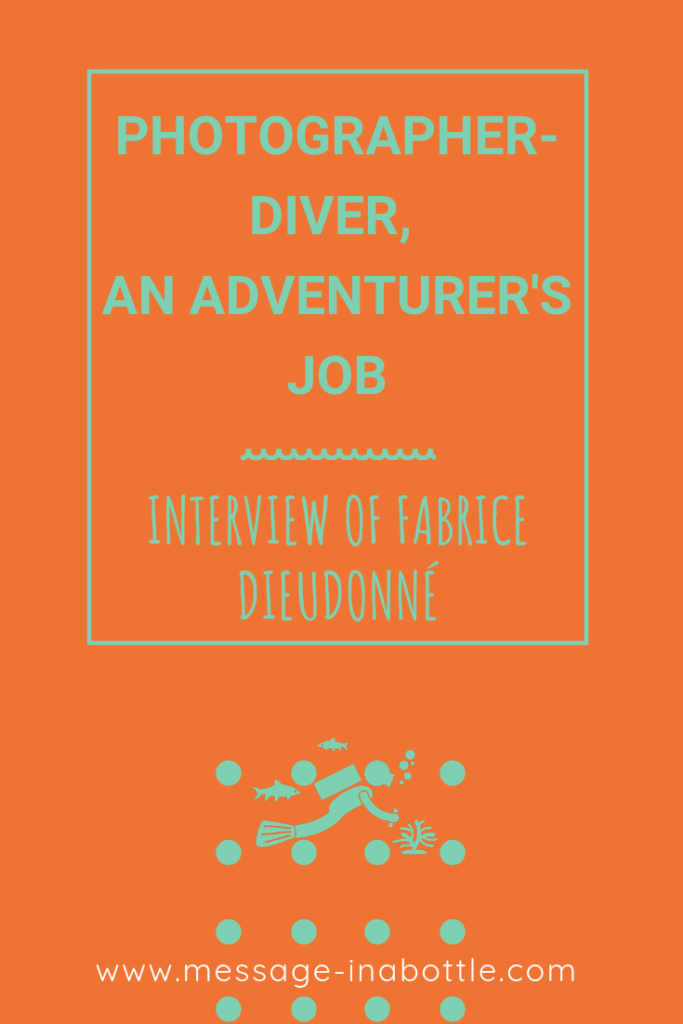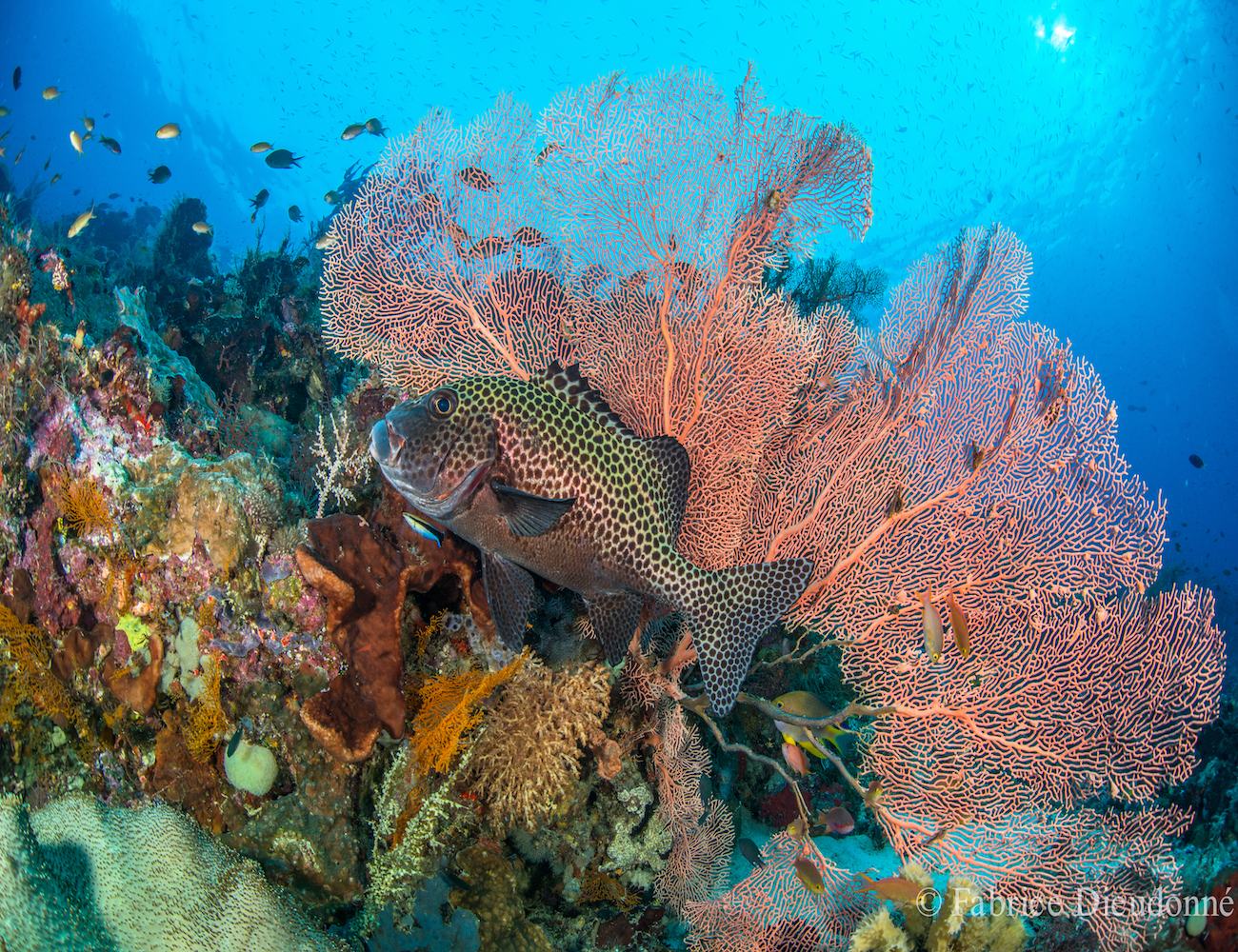Recently, I went for a few days to Koh Lanta in Thailand. And as it would have been a shame not to enjoy this wonderful place, I gave myself a little break under the water.
When we dive, we always have interesting meetings and we have time to discuss between two dives. This is where I met Fabrice Dieudonné, a photographer-diver. And since we never really stop working, I offered him to present his job.
And what is the relationship with communication or freelancer? In my opinion, if there is someone who represents the freelance / digital nomad, it is him, since he is nomadic on earth AND under water.
Moreover, in communication, we know the importance and the power of a good visual, isn’t it?
Let’s go for this new guest blogpost with the interview of Fabrice Dieudonné, photographer-diver at Koh Lanta. An adventurer’s job!
How should we call you? Photographer-diver? Naturalist photographer? Photographer-adventurer?
I really like the 3 appellations, because that summarizes my interests around photography; but maybe photographer-diver is the most appropriate right now.
Tell us your career…
Addict to travel to India in the mid-90s, returning to France only to save enough to leave, I ended up collecting all my savings and take a single trip in late 1997 and extend my trips to Indonesia and Thailand.
My first diving experience was when I was 14 years old in Brittany, but the re-discovery of the underwater world on Thailand’s coral reefs in 1999 was a turning point. A year later, I became a diving instructor which allowed me to no longer return to France to work.
The underwater photo became a focus of interest in my first few months of diving and I bought my first compact camera and waterproof case at a time when the digital was only starting.
And why Asia?
The travel choices. During my first trip, we hesitated with a friend between the Moroccan Atlas and the Indian Himalayas. We went to India, my first crush. And then, discover of Southeast Asia. Certainly, the climate and culture were decisive in my decision not to return to France. It’s been 20 years now …
How did you get trained in this job?
My job has two aspects, diving and photography. As I said, I have an instructor training and about fifteen years of teaching. At the same time, I am an autodidact in photography and I learned everything on the job and exchanged with other photographers.
Regarding my current job as a photographer-diver who follows the groups of divers who leave the day since Koh Lanta, I also learned as and when, with the help of a colleague who did that before me.
Especially about the logistics, because I have to take everyone on the boat and sometimes it’s more than 10 groups of divers. When the boat returns at the end of the day, everyone can buy a slideshow that tells the story of their day. The timing is very tight!
Describe us a typical day of your job …
I start with a 15 minute motorbike along the west coast of Koh Lanta to join the dive boat leaving at 8am. I meet all the divers on the boat during the 2 hours of travel which allow to join the dive sites, to explain to them my work and how they can be perfect models under water.
There follow two or three dives where I swim a lot to try to meet all the underwater world and to take snapshots of the coral fauna.
Between dives, I spend all my time choosing and editing photos. So during the return trip, I have the time to present each group their photos so that they can buy if they wish.
Back on earth, I go home or I have to spend a little more time, to put online the photos purchased so that customers can download them the same evening.
We live in a state of ecological emergency and witnessing it in the foreground is transforming.
Fabrice Dieudonné
But you do not just take pictures of divers, you also take marine life … Do you collaborate with magazines?
Yes, actually my main interest is underwater fauna (there are actually very few flora on a coral reef). I once illustrated an article about a diving spot in Indonesia, Pulau Weh in North Sumatra, in a Thai magazine, but otherwise I do not collaborate with magazines for the moment.
It is primarily a question of network and in general, in the paper press, the articles are disguised advertising for a diving center or a cruise ship, so once more, everything depends on who we know to publish.
I am more interested in online publications right now and for the moment, I publish my photos on my Facebook and Instagram page. The world of underwater photography is quite small and we all end up following each other on social networks, which allows us to see the work of others and to draw inspiration from them.
It’s a lot easier to progress now than it was 20 years ago with advanced digital photography technology and instant photo sharing. Moreover, often, it allows us to transmit a message of environmental protection which is an important aspect of my work.
What is your best photographer memory? And the worst?
There are so many beautiful memories, after thousands of hours underwater with my camera but meet majestic giants of the seas such as manta rays or whale sharks, it is especially magical!
That said I am very enthusiastic about the world of “little” and lately, I was super excited to take pictures, for the first time, the “blue ring octopus” or the “flamboyant cuttlefish”, two spectacular species of cephalopods.
The worst is to witness, over the years, the almost systematic destruction of marine ecosystems due to global warming and pollution. Seeing hundreds of square meters of whitewashed reefs and dying in the space of 2 months in 2010 in Thailand has been a profound shock. We live in a state of ecological emergency and witnessing it in the foreground is transforming.
I am outraged to see the general stagnation of decision makers in this emergency! It is already too late, in my opinion, but we must react radically to at least limit the breakage and avoid a hell too intense for future generations.
How do you live your freelance status? What difficulties do you live as an entrepreneur?
I love my freelance status because it gives me the freedom I was looking for when I left France 20 years ago. I have not encountered any particular difficulties here in Thailand, because the procedures and costs are much easier and less than in France.
Do you suffer from the competition, I think among others all the divers who bring their GoPro …?
So in fact, paradoxically, people who have their own camera and especially GoPro users are very good customers because they are sensitive to the photo and they realize that they can’t make good pictures of them. themselves. The selfie has its limits and I have a camera and an experience that often allows them to bring home much better shots.
Underwater photography is a very technical and difficult activity, it takes time to get results and most of my clients dive once or twice a year and do not have time to perfect their photo practice.
What are your goals / dreams?
Diving with humpback whales!
Otherwise, professionally, I would like to occasionally supervise dive cruises specifically for photographer, which would allow me to visit many other spots that I do not know.
THANK you Fabrice! If you go to Koh Lanta and dive, you will certainly cross his path! Give him a hello from us! And without waiting for your next vacation, just to take a break and dream a little, follow Fabrice’s work by visiting his Instagram and Facebook pages.
Ready to dive into a magic world?

par Delphine Berclaz
